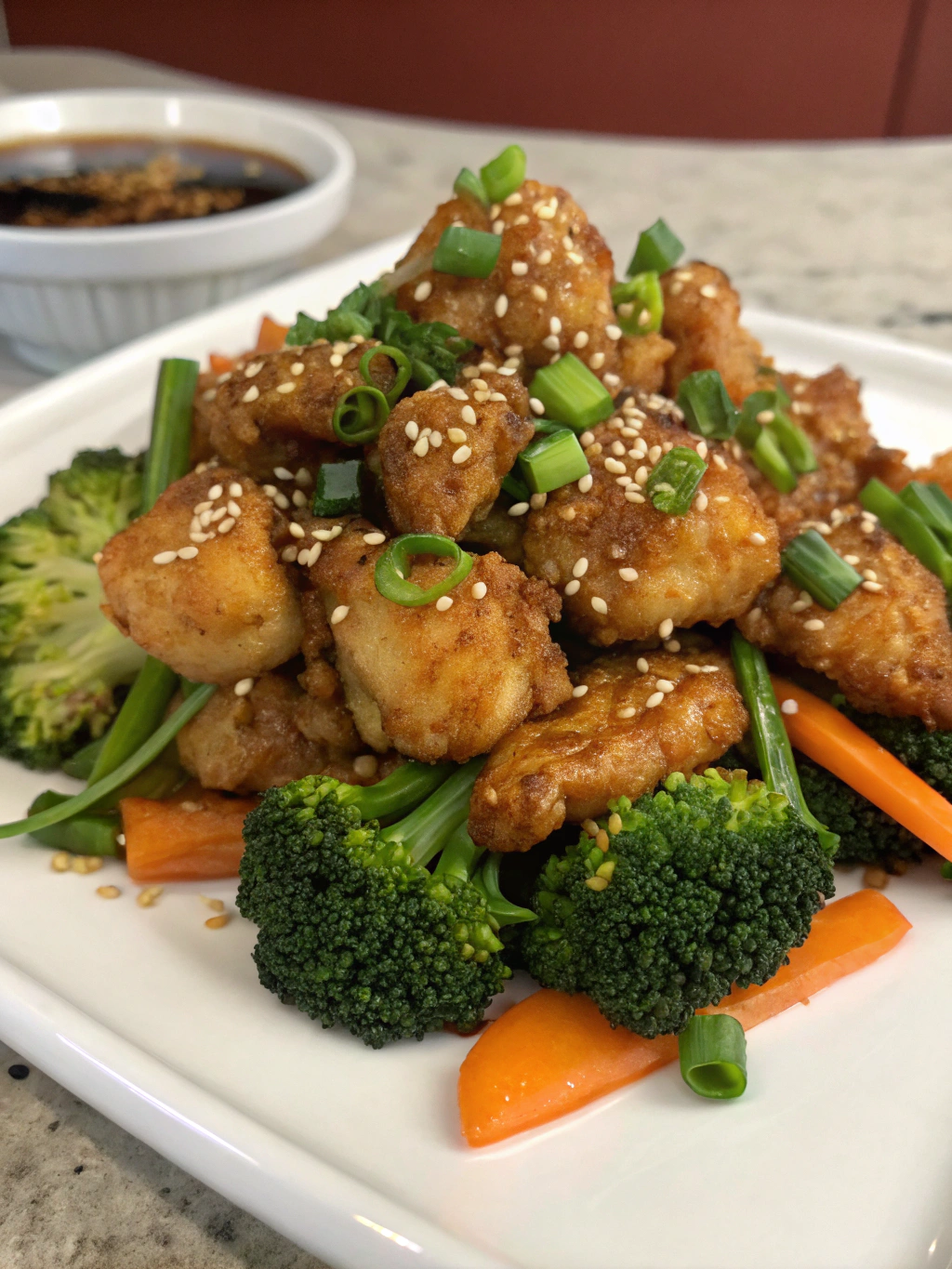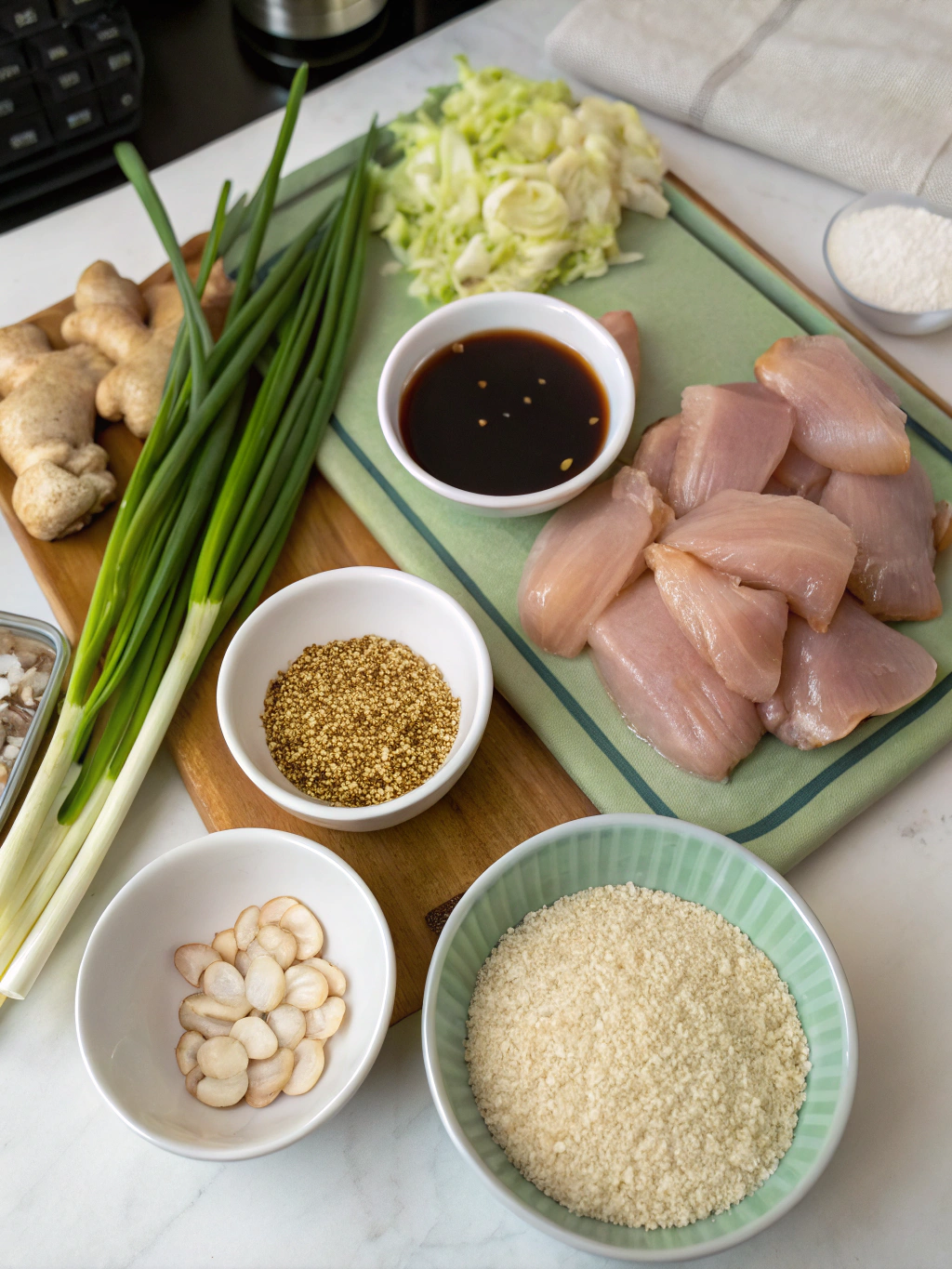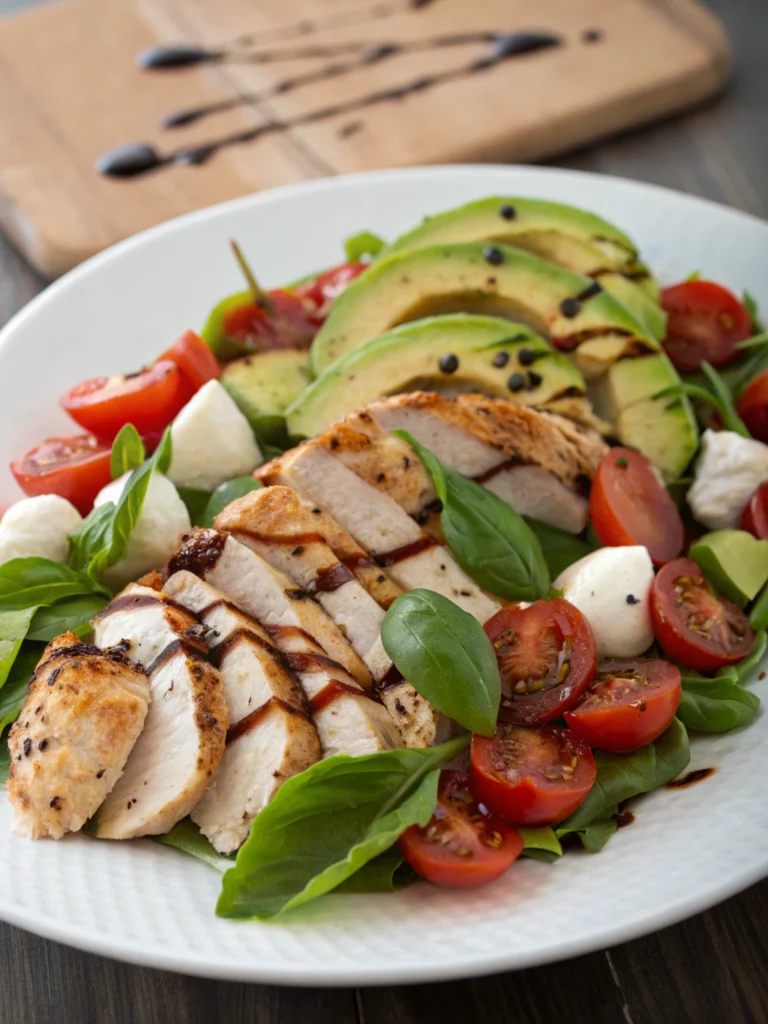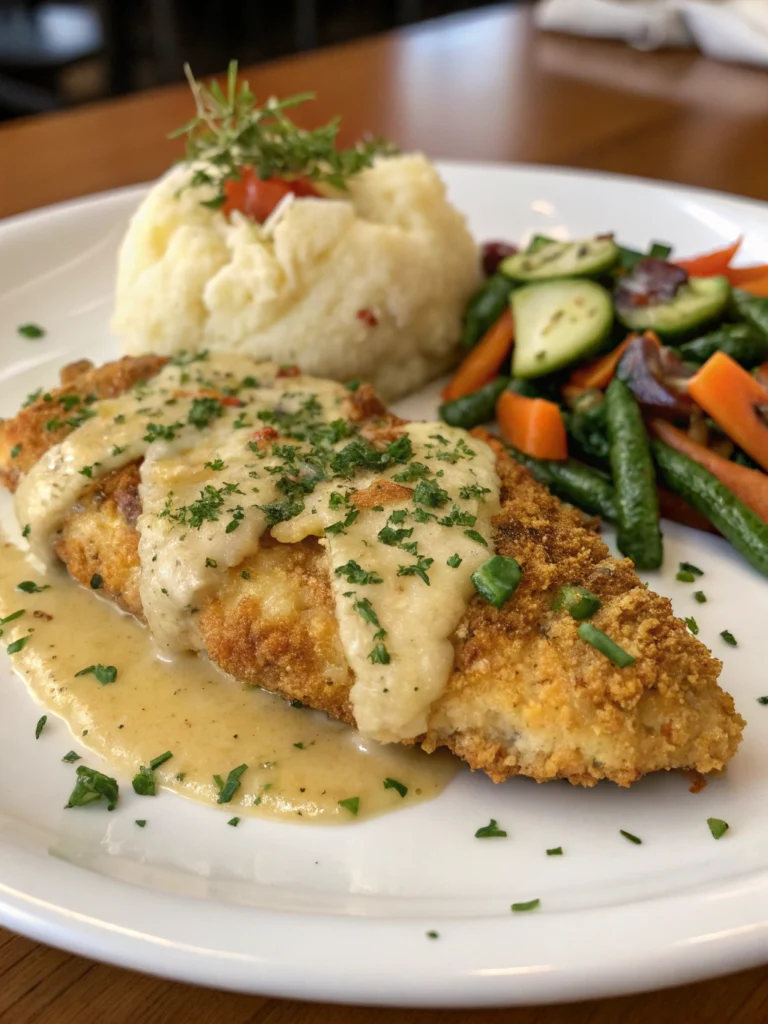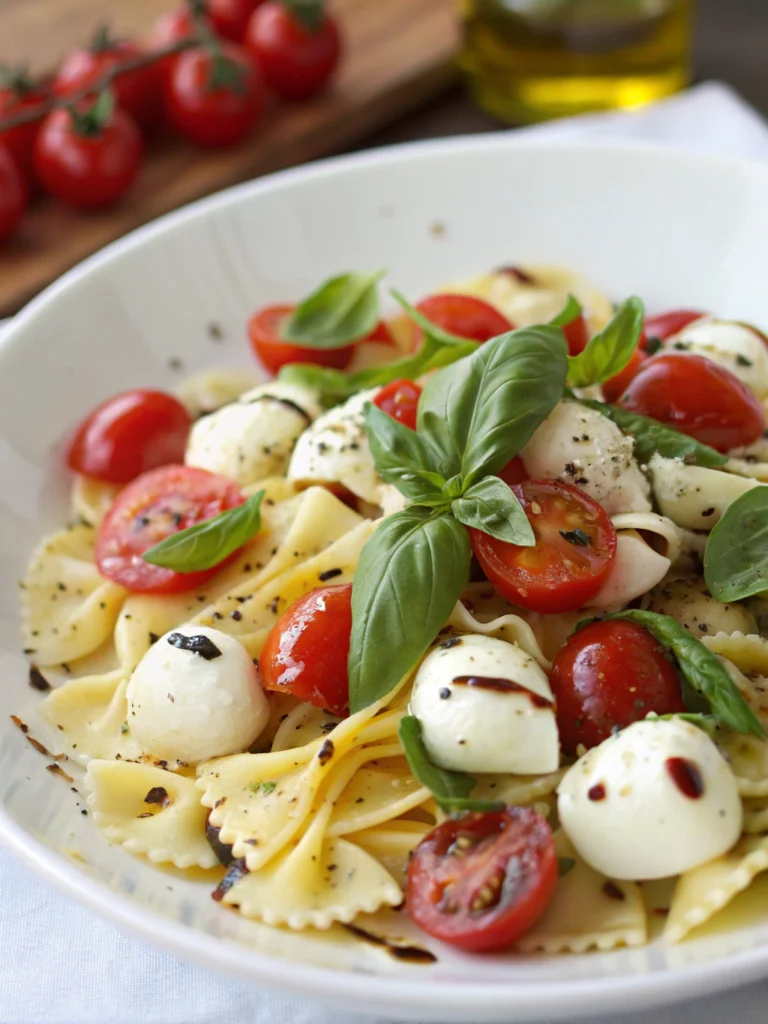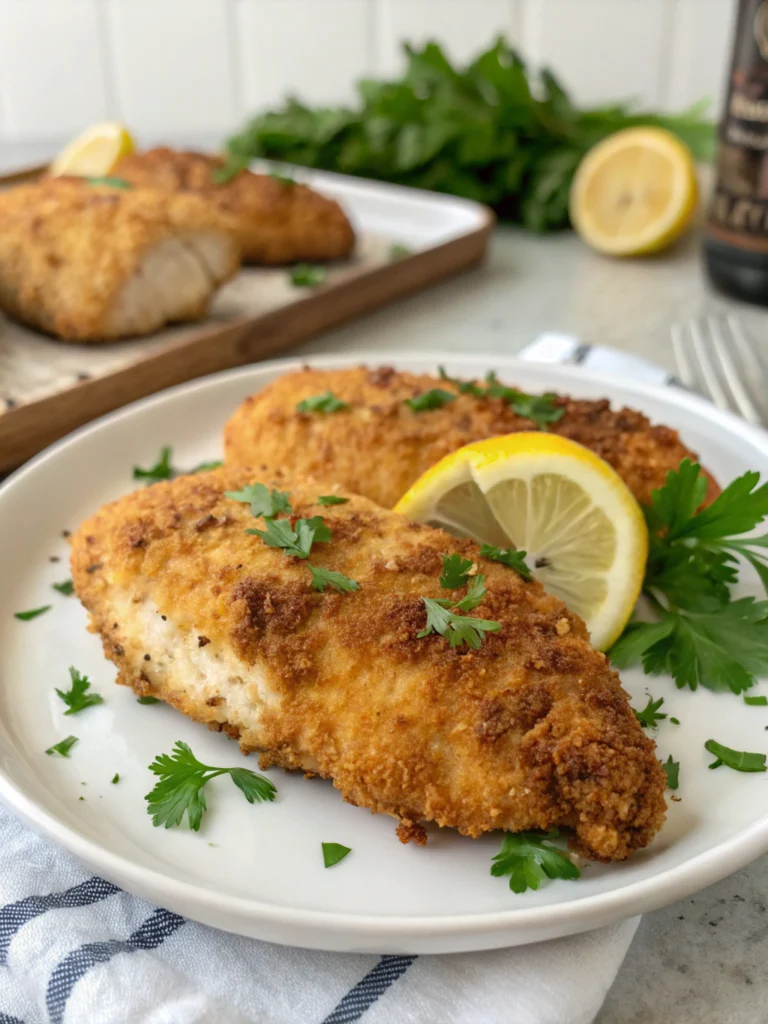Sesame Chicken Recipe
A perfect blend of crispy chicken bites coated in a sweet and savory sesame sauce that’s better than takeout. This homemade sesame chicken recipe delivers restaurant-quality results with simple pantry ingredients in just 30 minutes!
Easy Sesame Chicken Recipe
There’s something incredibly satisfying about creating your own version of a beloved takeout classic. This homemade sesame chicken recipe transforms simple ingredients into a crave-worthy dish that balances sweet, savory, and nutty flavors. Traditionally a staple in American-Chinese cuisine, sesame chicken has become a comfort food favorite that pleases both kids and adults alike.
Perfect for busy weeknights or weekend family dinners, this recipe captures that distinctive balance of crispy exterior and tender interior that makes sesame chicken so irresistible. The glossy sauce clings perfectly to each piece, delivering concentrated flavor in every bite.
THIS RECIPE:
- Creates restaurant-quality sesame chicken with minimal effort
- Uses pantry staples you likely already have on hand
- Cooks in one pan for easy cleanup
- Delivers the perfect sweet-savory balance that’s never cloying
| Recipe Details | Information |
|---|---|
| Prep Time | 15 minutes |
| Cook Time | 15 minutes |
| Total Time | 30 minutes |
| Servings | 4 portions |
| Yield | 4 cups sesame chicken |
This sesame chicken recipe strikes the perfect balance between simplicity and flavor. Unlike restaurant versions that can be overly sweet or heavily battered, this homemade approach lets the quality ingredients shine while still delivering that distinctive sesame chicken taste you crave. The technique is straightforward enough for beginners but yields results that will impress even the most discerning eaters.
Ingredients for Sesame Chicken Recipe
The key to exceptional sesame chicken lies in using fresh ingredients and achieving the right balance in the sauce. While this recipe is forgiving, selecting high-quality proteins and aromatics will elevate your final dish significantly. The combination of soy sauce, honey, and toasted sesame oil creates that distinctive flavor that makes this dish so popular.
For the Chicken:
- 1½ pounds boneless, skinless chicken breasts or thighs, cut into 1-inch pieces
- 2 large eggs, beaten
- ½ cup cornstarch
- ¼ cup all-purpose flour
- ½ teaspoon salt
- ¼ teaspoon black pepper
- ¼ cup vegetable oil (for frying)
For the Sauce:
- ½ cup low-sodium soy sauce
- ⅓ cup honey
- ¼ cup brown sugar, packed
- 3 tablespoons rice vinegar
- 2 tablespoons toasted sesame oil
- 2 tablespoons cornstarch
- ¼ cup water
- 3 garlic cloves, minced
- 1 tablespoon fresh ginger, grated
- ¼ teaspoon red pepper flakes (optional, for heat)
For Garnish:
- 3 tablespoons toasted sesame seeds
- 4 green onions, thinly sliced
- Steamed rice, for serving
| Ingredient Category | Recommended Quantity | Quality Tips |
|---|---|---|
| Chicken | 1½ pounds | Choose chicken thighs for more flavor and moisture, or breasts for a leaner option. Look for air-chilled, organic chicken when possible. |
| Aromatics | 3 garlic cloves, 1 tbsp ginger | Fresh is essential; avoid pre-minced options. Ginger should be firm with smooth skin. |
| Soy Sauce | ½ cup | Use low-sodium varieties to control salt levels. Japanese or Chinese brands provide the most authentic flavor. |
| Sweeteners | ⅓ cup honey, ¼ cup brown sugar | Pure honey offers better flavor than blended varieties. Dark brown sugar provides deeper molasses notes. |
| Sesame Elements | 2 tbsp sesame oil, 3 tbsp sesame seeds | Look for toasted sesame oil for maximum flavor. Toast raw sesame seeds yourself for fresher taste and aroma. |
How to Make Sesame Chicken Recipe
Creating perfect sesame chicken involves a two-part process: first achieving the ideal crispy coating on the chicken, then creating a silky sauce that clings to each piece. While it may seem complex, breaking it down into manageable steps makes this recipe approachable for cooks of all experience levels.
Prepare the chicken coating:
- In a medium bowl, whisk together cornstarch, flour, salt, and pepper.
- In a separate bowl, beat the eggs until smooth.
- Pat chicken pieces dry with paper towels (this ensures better coating adhesion).
- Dip chicken pieces into beaten eggs, then dredge in the cornstarch mixture, ensuring each piece is evenly coated.
- Place coated chicken on a plate or baking sheet, allowing pieces to rest for 5 minutes (this helps the coating adhere better).
Prepare the sauce:
- In a medium bowl, whisk together soy sauce, honey, brown sugar, rice vinegar, and sesame oil.
- In a small separate bowl, create a slurry by mixing 2 tablespoons cornstarch with ¼ cup water until smooth.
- Combine the slurry with the soy sauce mixture, whisking until incorporated. Set aside.
Cook the chicken:
- Heat vegetable oil in a large skillet or wok over medium-high heat until shimmering.
- Working in batches to avoid overcrowding (which prevents crispiness), add coated chicken pieces to the hot oil.
- Fry for 3-4 minutes per side until golden brown and crispy. The internal temperature should reach 165°F (74°C).
- Transfer cooked chicken to a paper towel-lined plate to drain excess oil.
Finish with the sauce:
- Pour all but 1 tablespoon of oil from the pan, leaving any browned bits (flavor!).
- Add minced garlic, grated ginger, and red pepper flakes (if using) to the pan, stirring constantly for 30 seconds until fragrant.
- Pour in the sauce mixture and bring to a simmer, stirring frequently.
- Cook for 2-3 minutes until the sauce thickens and becomes glossy.
- Return fried chicken pieces to the pan, tossing gently to coat each piece evenly with sauce.
- Simmer for 1-2 minutes to allow the chicken to absorb some of the sauce flavors.
Garnish and serve:
- Sprinkle with toasted sesame seeds and sliced green onions.
- Serve immediately over steamed rice while still hot and glossy.
Pro tip: Don’t overcook the sauce after adding it to the chicken. Extended cooking will cause the coating to soften and lose its delightful crispiness.
Tips for Making Sesame Chicken Recipe
Creating restaurant-quality sesame chicken at home hinges on a few key techniques that elevate this dish from good to exceptional.
- Double-dredge for extra crispiness: For an even crispier coating, double-dip the chicken by passing it through the egg and then cornstarch mixture twice.
- Control your heat: Maintain consistent oil temperature around 350°F (175°C) for optimal frying—too hot burns the coating, too cool makes it greasy.
- Work in batches: Overcrowding the pan drops the oil temperature and creates steaming instead of frying.
- Toast your sesame seeds: Dry-toast sesame seeds in a pan until golden brown to release their aromatic oils and enhance flavor.
| Technique | Recommendation |
|---|---|
| Cutting chicken | Slice against the grain in even 1-inch pieces for consistent cooking and maximum tenderness |
| Frying | Use a heavy-bottomed pan or wok for even heat distribution |
| Sauce consistency | Adjust with additional cornstarch slurry (thicker) or water (thinner) as needed |
| Balance | Taste sauce before adding to chicken; adjust sweetness with honey or acidity with rice vinegar |
The cornstarch in both the coating and sauce is crucial. In the coating, it creates the signature light, crispy texture that defines great sesame chicken. In the sauce, it provides that glossy thickness that allows the sauce to cling perfectly to each piece of chicken rather than pooling at the bottom of your plate.
Make-Ahead Instructions
While sesame chicken is best enjoyed fresh from the wok, you can prepare components ahead of time to streamline the cooking process when you’re ready to serve.
For the chicken prep, you can:
- Cut and marinate chicken pieces up to 24 hours in advance, stored covered in the refrigerator.
- Mix the dry coating ingredients (cornstarch, flour, salt, pepper) up to 3 days ahead, stored in an airtight container at room temperature.
For the sauce:
- Prepare the sauce mixture (without the cornstarch slurry) up to 3 days in advance, stored in an airtight container in the refrigerator.
- Add the cornstarch slurry just before cooking, as it can separate during storage.
When ready to cook:
- Remove prepped chicken from refrigerator 15-20 minutes before cooking to take the chill off.
- Proceed with dredging and frying as directed.
- Heat pre-made sauce, add fresh cornstarch slurry, and continue with recipe instructions.
This approach saves about 15 minutes of prep time, making this dish even more weeknight-friendly.
Storing Leftovers
Proper storage is key to maintaining the quality of leftover sesame chicken, though the texture will naturally change somewhat after refrigeration.
- Store completely cooled leftovers in airtight containers, separating rice from chicken if possible.
- Refrigerated sesame chicken will keep for 3-4 days.
- For best results, store the sauce separately from any unused fried chicken pieces to preserve crispiness.
- When reheating, add 1-2 tablespoons of water to restore moisture to the sauce if it has thickened.
To reheat:
- Microwave: Heat in 30-second intervals, stirring between each, until internal temperature reaches 165°F (74°C).
- Stovetop: Warm gently in a covered skillet over medium-low heat with a splash of water or chicken broth.
Pro tip: The coating will soften during storage, but reheating in a 350°F (175°C) oven for 8-10 minutes can restore some crispness before adding back to the warmed sauce.
Freezing Sesame Chicken Recipe
While fresh is always best, sesame chicken can be successfully frozen for future meals with some adjustments.
For best results:
- Prepare and fry the chicken pieces as directed, but do not add them to the sauce.
- Cool the fried chicken completely on a wire rack.
- Pre-freeze the pieces on a parchment-lined baking sheet for 2 hours until solid.
- Transfer to freezer-safe bags or containers, pressing out excess air.
- Freeze the sauce separately in airtight containers or freezer bags.
Frozen sesame chicken will maintain quality for up to 2 months. After that, it’s still safe but texture and flavor may deteriorate.
To thaw and reheat:
- Thaw chicken and sauce overnight in the refrigerator.
- Reheat chicken in a 375°F (190°C) oven for 10-12 minutes until crisp and heated through.
- Warm sauce in a saucepan over medium heat, whisking occasionally.
- Toss reheated chicken in warmed sauce just before serving.
For best texture after freezing, consider undercooking the chicken slightly during the initial frying so it doesn’t become overcooked during reheating.
Serving Suggestions
Elevate your homemade sesame chicken with thoughtfully paired sides and presentation touches that create a complete dining experience.
Perfect Pairings:
- Serve over steamed jasmine or basmati rice to soak up the delicious sauce
- Offer steamed broccoli or sugar snap peas on the side for color and nutrition
- Include vegetable egg rolls or dumplings for an authentic takeout experience
- Prepare a quick cucumber salad with rice vinegar and sesame seeds for a refreshing contrast
Presentation Ideas:
- Serve family-style in a large shallow bowl with sauce pooled at the bottom
- Garnish with a combination of white and black sesame seeds for visual interest
- Arrange sliced green onions in a neat diagonal pattern across the top
- Place a small bowl of extra sauce on the side for dipping or drizzling
Beverage Pairings:
- Jasmine tea provides a traditional complement to the dish
- A light lager or pilsner beer balances the sweet-savory flavors
- For wine enthusiasts, an off-dry Riesling or Gewürztraminer works beautifully
- Plum wine offers an authentic Asian dining experience
Serve sesame chicken hot, immediately after tossing with the sauce, when the contrast between the sauce-coated exterior and juicy interior is at its peak. The ideal temperature allows the sesame oil’s nutty aroma to shine through.
FAQ
Can I make sesame chicken without deep frying?
Yes! For a lighter version, you can bake the coated chicken pieces on a wire rack set over a baking sheet at 425°F (220°C) for about 15-18 minutes, flipping halfway through. Spray or brush with a little oil first for better browning. While the texture won’t be identical to the fried version, it’s still delicious when tossed with the sauce.
What can I substitute for honey in the sauce?
You can use maple syrup, agave nectar, or even just additional brown sugar in place of honey. Each will slightly alter the flavor profile, with maple syrup adding a deeper, woodsy note. Adjust quantities slightly as maple syrup and agave are typically sweeter than honey.
My sauce became too thick. How can I fix it?
If your sauce thickens too much, simply whisk in water, chicken broth, or pineapple juice, one tablespoon at a time, until you reach your desired consistency. Remember that the sauce will continue to thicken as it cools and when it coats the hot chicken.
Can I use chicken breast instead of thighs?
Absolutely! Chicken breast works beautifully in this recipe, though it’s slightly less forgiving in terms of cooking time. Be careful not to overcook, as breast meat can dry out more quickly than thighs. For maximum tenderness, consider marinating the chicken breast pieces in 1 tablespoon soy sauce and 1 teaspoon baking soda for 15 minutes before rinsing, patting dry, and proceeding with the recipe.
How can I make this sesame chicken recipe gluten-free?
To make gluten-free sesame chicken, replace all-purpose flour with rice flour or a gluten-free flour blend, and use tamari or certified gluten-free soy sauce instead of regular soy sauce. Double-check that your rice vinegar is also certified gluten-free, as some varieties may contain trace amounts of gluten.

